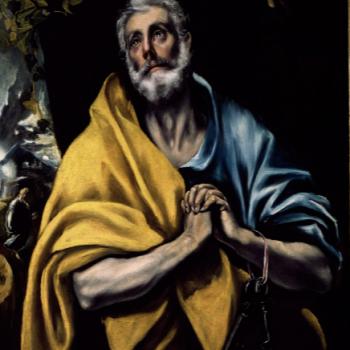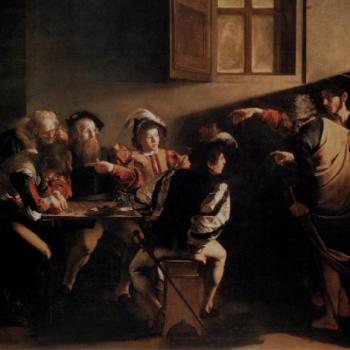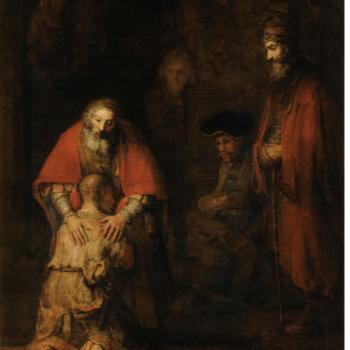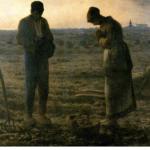
Analyzing Religious Art Series: A Deeper Exploration
In this ongoing series for An Exhibition Of Art History, I am going to be analyzing famous works of religious art. The focus will be religious symbolism, the history of the piece, biblical history and reference and my personal interpretation of the piece. I hope you enjoy this series as it will take on a wide variety of artistic expressions and spiritual avenues. Each article will represent one piece to keep a clean and deep understanding of it’s history and message. My first article explored the famous work of Rembrandt, The Return Of the Prodigal Son.
The second article of the series focused on The Calling of Saint Matthew by Caravaggio. You may follow this link to read more. The Virgin in Prayer by Giovanni Battista Salvi da Sassoferrato was the following subject. The Annunciation by the African-American painter Henry Ossawa Tanner and The Tears of Saint Peter (El Greco, Mexico City) by El Greco was the last two articles.
I have found a famous piece that represents, to me, a very humble and thoughtful representation of personal spirituality and faith. In this case, we will be discussing The Angelus by French painter Jean-François Millet.
Peasant painting drives up the price of art to an extreme
How does a simple, rural, French landscape painting with two peasants bowing in prayer become so important and famous? This is a question I have asked myself as I gaze upon this very humble yet deeply spiritual painting. The Angelus by Jean-François Millet is an oil painting on canvas (1857-1859) and was created in the Barbizon school of painters where the French painter resided. The school moved away from the ornate trickery that stressed sharply defined creations(artifice), having students use softer and more realistic portraits of everyday life. This proved to be unpopular until the late 1850’s as Millet had tried to sell The Gleaners, a rural painting of peasants collecting crops in a field, and it was criticized for the large-scale representation and menial subject matter.
The idea for a new French vision came to Millet that ended up creating a great buzz that ended with a 300,000 francs price tag:
Millet said: “The idea for The Angelus came to me because I remembered that my grandmother, hearing the church bell ringing while we were working in the fields, always made us stop work to say the Angelus prayer for the poor departed.”[2]
A man and a woman are seen bowing in prayer over a basket of potatoes in what looks to be the sun setting over their fields, marking the end of the work day. The simple change that Millet re-envisioned in this oil on canvas proved to be popular and though he initially sold it for 1,000 francs, the word of the piece had generated a huge amount of buzz over the message behind it and the realism of the subject matter. The shift in the market and world of art changed dramatically due to national sentiments, art tastes changing and in general, an open dialogue of its perspective on religion, society, Socialism and divided spiritual accounts of whether this was pure nostalgia or something more religious.
The Angelus prayer is a nod to archangel Gabriel’s message to the Virgin Mary
The Angelus prayer is actually a very important and religious title, it’s meaning behind it enriched in biblical verse. It is linked to The Annunciation in Luke 1.26-38, when Gabriel the archangel speaks to Mary she will be carrying and giving birth to the son of God, Jesus Christ. The Angelus prayer was signaled by a ringing bell. This was enacted three times daily, at dawn, noon and evening, corresponding to the start, the lunch break, and the close of the working day.
The ringing of the bell to start the prayer truly was a deep inspiration to Millet as he told his agent Alfred Sensier of his first impressions of The Angelus prayer:
“Well, what do you think of it?” “It’s the Angelus,” acknowledged Sensier. To which Millet replied: “Can you hear the bells?”
This deeply religious sentiment captured the hearts and minds of the faithful and spiritual alike, in French culture and religion. I feel even as society then and now and the art world had a divided perspective on what this painting truly was trying to say, it absolutely has religious merit even with the added interpretation that it was a statement on society, work culture or in favor of socialism.
First and Last Impressions
I had a truly peaceful and humbling experience gazing upon Millet’s The Angelus prayer. Knowing all of the history behind it, the reasoning and logic that truly makes up this famous work of religious art, I have a sense of calming warmth that is recreated in this rustic, homey and down to earth painting of two people in prayer, both hard working and loving, and it gives me inspiration and hope to humanity. I can see why this piece marked a new era of realism and softness. It truly evokes a timeless story about how enduring the human spirit is when enriched by the rich spiritual love of God and each other.













